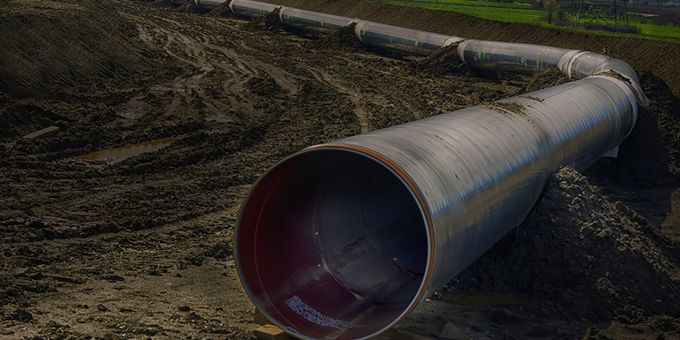Selecting the most suitable energy source, like biogas, is critical. With the right system in place, farmers can benefit from a powerful and cost-effective fuel supply to run a multitude of operations, no matter how energy-intensive their processes may be.
 Utilizing Liquid Petroleum Gas in Farming
Utilizing Liquid Petroleum Gas in Farming

Article from | John Hannen
As the supplier of over 60% of the food we consume, the farming and agriculture sector is one of the most important industries in the UK. Farming requires a lot of energy to cultivate crops and breed, feed and maintain livestock. In colder months, farmers need even more fuel to power their operations.
Selecting the most suitable energy source, like biogas, is critical. With the right system in place, farmers can benefit from a powerful and cost-effective fuel supply to run a multitude of operations, no matter how energy-intensive their processes may be.
Liquefied petroleum gas is powering the farming industry
Liquefied petroleum gas is being considered as an alternative, clean fuel source by farmers. With a long list of operational and environmental benefits such as a low-carbon, clean-burning alternative to conventional fossil fuels, it’s becoming the go-to choice for farmers in the UK. Here, we look at how LPG is a great choice for the sector.
1. Maintaining the optimal temperature for your livestock
In order to keep your livestock animals healthy, you need to keep them warm. Without warmth they can suffer, be prone to disease and even die if conditions aren’t kept at the right temperatures. This is particularly important for rearing poultry, because constant access to heat is key to their survival.
LPG offers many benefits in this respect. It allows you to maintain greater control over indoor temperatures. You can set optimum moisture levels which will aid in speedy feathering and weight gain amongst poultry. As a clean-burning, smoke-free fuel, it won't expose animals to harmful emissions. This reduces the risk of contamination through feeds and litter when compared to oil-based fuels.
2. Dry your crops efficiently
For farmers who need a power source to dry crops, grains and fruit, look no further than LPG. As an efficient fuel supply, its grain-drying technology can convert up to 90% of the gas used. This lowers fuel consumption and results in potential cost-savings for farmers. Its high levels of control allow you to maintain consistent drying temperatures, reducing the risk of ‘over-drying’. The result is a more evenly dried, higher-quality grain that consumers want to buy.
3. Instantaneous hot water for dairy farmers
LPG, with its instant production of hot water, provides benefits to dairy producers. Regularly washing milk lines and storage tanks is important for dairy farm operations to prevent the risk of legionella bacteria. But the heating of electric water tanks can be expensive to run and often requires time to heat, meaning fuel bills can be high.
The instant-access hot water available via LPG means dairy farmers can efficiently and quickly clean their milk lines. LPG water heating offers potential cost-savings and eliminates the need for large water storage tanks as you can heat the water instantaneously.
4. Maintain flower and plant crops
The farming and agriculture sector is also a key provider of commercially grown flowers and plants in addition to edible crops. As farms look to expand their offering, the growing of flowers and plants is now a big business, so it’s essential they’re kept at optimum temperatures. This reduces the risk of them being damaged. With LPG heating systems, farmers have greater control, ensuring their plants are given everything they need to thrive. LPG’s clean-burning properties also reduce the risk of contamination over oil fuel, keeping plants safe and healthy.
5. Repurpose your LPG to power your farmhouse
You can also utilise your LPG source to heat your home and cook your food, evidencing its adaptability. For those living off-grid, LPG provides a low-carbon alternative to conventional fossil fuels with no risk of oil spills.
You can repurpose your LPG and use it for gas cooking or heating your on-site home, proving it has so many benefits. It also offers flexible storage options as bulk domestic tanks can be kept above or below ground, ensuring they’re positioned out of view. If your home energy needs are less substantial, you can use gas cylinders which are portable and can be stored in a convenient location. You’ll also benefit from an automated ordering system that will keep you topped up, completely free of charge.
Sources
- https://www.hse.gov.uk/gas/lpg/
- https://www.northernenergy.co.uk/news/can-lpg-be-considered-green/#:~:text=LPG%20can%20be%20considered%20a,such%20as%20sulphur%20and%20nitrogen.
- https://thepoultrysite.com/articles/managing-heat-and-minimum-ventilation-systems-in-the-broiler-house
- http://www.total.co.za/pro/totalgaz-main/totalgaz-services-uses-lpg/totalgaz-agricultural.html
- https://apic.org/monthly_alerts/what-you-need-to-know-about-legionnaires-disease/
- https://www.fwi.co.uk/arable/crop-selection/market-opportunities/the-new-crops-that-could-soon-profit-uk-farmers
The content & opinions in this article are the author’s and do not necessarily represent the views of AgriTechTomorrow
Comments (0)
This post does not have any comments. Be the first to leave a comment below.
Featured Product

